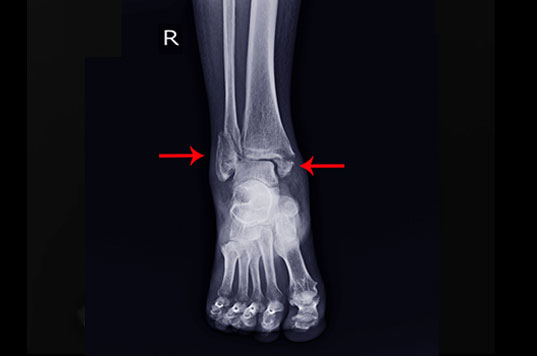
2 Ankle Fractures
Ankle fractures are another common injury encountered in our practice. Ankle fractures can easily occur from rolling your ankle inward or outward or a slip and fall type of injury. A fracture involves a partial or complete break in the bone. An ankle fracture can involve one of the 2 bones, the tibia and/or the fibula, in the leg and are often accompanied by severe swelling and inability to bear weight.
Symptoms and Diagnosis
Symptoms of an ankle fracture include pain and swelling, either of which may be present only in the ankle region itself or spread to parts of the foot or up toward the knee. Any pain will usually be more intense if the injured person tries to put weight on the ankle. Contusions (bruises) are also usually present. In a severe break, the ankle may appear to be deformed or have bone protruding out of the skin.
Imaging such as x-rays are required to determine whether there is a broken bone in the ankle joint and can rule in a soft tissue injury like a severe sprain with ligament tear. Ire n severe cases such as comminuted fractures other radiology imaging, such as a CT scan or MRI, may be needed to determine the full scope of the injury.

Treatment
Treatment is dictated on the displacement of the alignment of the ankle bones and the stability of the ankle joint. The primary goal is to ensure that the joint and the bones heal as closely and anatomic as possible in order to prevent further instability and malalignment of the joint. Even the slightest amount of malalignment in the ankle joint can lead to post traumatic arthritis. Certain ankle fracture with no displacement can be treated conservatively with a short leg fiber glass cast as well as a specialized walking boot.
